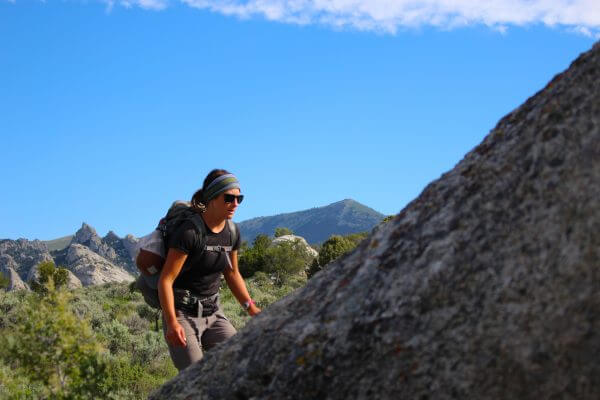BlueFire Wilderness stands as a beacon of hope for troubled adolescents and their families, offering a transformative journey towards healing and growth. With a track record of aiding countless individuals in overcoming challenges, it has earned recognition in the realm of therapeutic wilderness programs. However, recent developments have cast a shadow over its reputation, as a lawsuit has surfaced, raising pertinent questions about its practices and safety standards. In this comprehensive article, we delve into the intricacies of the BlueFire Wilderness lawsuit, shedding light on the allegations, investigations, responses, and the ensuing impact.
The Lawsuit
The lawsuit against BlueFire Wilderness has sparked significant attention within the therapeutic wilderness program community and beyond. Filed by concerned parties, it brings forth allegations that challenge the integrity and efficacy of the program. Central to the lawsuit are claims regarding the treatment of participants, safety protocols, and the overall quality of care provided by BlueFire Wilderness.
Alright, let’s break down what’s going on with this lawsuit against BlueFire Wilderness. Picture this: BlueFire Wilderness, this place known for helping troubled teens find their footing in the wilderness, suddenly finds itself in hot water. Yep, there’s a lawsuit swirling around, and it’s stirring up quite the buzz.
So, what’s the fuss all about? Well, it seems like some folks aren’t too happy with how things are run over at BlueFire. They’re throwing around accusations left and right, saying the supervision’s been lax, there’s been mistreatment of participants, safety protocols have gone out the window, and to top it off, they’re even claiming the whole program’s been overselling itself. It’s a mess, to say the least.
Now, who’s behind all this drama? It’s hard to say for sure, but it’s likely a mix of concerned parents, participants, and maybe a few watchdog groups who’ve got wind of what’s been going down. They’ve decided enough is enough and are taking their grievances to court.
As you can imagine, BlueFire Wilderness isn’t taking this lying down. They’re hustling to do damage control, launching internal reviews, teaming up with regulators, beefing up staff training—you name it. They’re basically in full-on crisis mode, trying to salvage their rep and reassure everyone that they’re still on the up and up.
But the thing is, lawsuits like these don’t just blow over. There’s a real impact here. BlueFire’s reputation’s taken a hit, there’s all this extra scrutiny from the powers that be, and the whole industry’s kind of taking a long hard look in the mirror. It’s a rocky road ahead, for sure. But hey, maybe—just maybe—there’s a chance for things to come out better on the other side. Only time will tell.
Key Allegations
At the heart of the lawsuit lie several key allegations that paint a concerning picture of the operations at BlueFire Wilderness:
- Negligence in Supervision: Accusations of inadequate supervision leading to instances of harm and endangerment to participants have been raised. Concerns regarding the lack of sufficient staff-to-participant ratios and oversight during activities and expeditions have been highlighted.
- Alleged Abuse and Mistreatment: Disturbing reports alleging physical, emotional, and psychological abuse inflicted upon participants have surfaced. These allegations include instances of verbal aggression, punitive measures, and neglect of basic needs, raising serious ethical and legal concerns.
- Safety Protocol Violations: Claims suggest that BlueFire Wilderness failed to uphold essential safety protocols, compromising the well-being of participants. Instances of unsafe practices during wilderness activities, inadequate emergency preparedness, and insufficient medical care have been cited.
- Misrepresentation of Program Efficacy: Allegations of misleading advertising and misrepresentation of program outcomes have been brought forth. Concerns regarding the disparity between promised results and actual experiences of participants and their families have fueled skepticism about the program’s credibility.

Investigation and Response
In response to the lawsuit, BlueFire Wilderness has initiated internal investigations and external audits to address the allegations and ensure transparency and accountability. These efforts include:
- Internal Review: BlueFire Wilderness has launched an internal review process to assess the validity of the allegations and identify areas for improvement within the program. This comprehensive evaluation involves examining operational procedures, staff training protocols, and participant feedback mechanisms.
- Collaboration with Regulatory Bodies: The program has engaged with relevant regulatory bodies and industry associations to facilitate independent investigations into the allegations. By cooperating with authorities and adhering to regulatory standards, BlueFire Wilderness aims to demonstrate its commitment to compliance and best practices.
- Enhanced Training and Oversight: Recognizing the importance of staff training and supervision in ensuring participant safety and well-being, BlueFire Wilderness has implemented enhanced training programs and bolstered supervision protocols. These measures are designed to mitigate risks and foster a culture of accountability among staff members.
- Transparent Communication: BlueFire Wilderness has prioritized transparent communication with participants, their families, and the public throughout the legal proceedings. By providing regular updates and addressing concerns openly, the program seeks to rebuild trust and maintain integrity amidst adversity.
The Impact
The BlueFire Wilderness lawsuit has had far-reaching implications for the program, its participants, and the broader therapeutic wilderness program community:
- Reputational Damage: The allegations and ensuing legal proceedings have tarnished BlueFire Wilderness’s reputation, raising doubts among prospective participants and their families. Rebuilding trust and restoring credibility in the wake of the lawsuit poses a significant challenge for the program.
- Regulatory Scrutiny: The lawsuit has prompted increased regulatory scrutiny of therapeutic wilderness programs, leading to heightened oversight and accountability measures. Regulatory bodies are closely monitoring program operations to ensure compliance with safety standards and ethical guidelines.
- Industry Reflection and Reform: The controversy surrounding BlueFire Wilderness has sparked critical reflection within the therapeutic wilderness program industry, prompting discussions about best practices, ethical guidelines, and participant safety. This introspection may lead to reforms aimed at enhancing accountability and improving outcomes for participants.
- Support for Affected Parties: Amidst the legal proceedings, efforts are underway to provide support and resources to affected participants and their families. Counseling services, legal assistance, and advocacy efforts seek to address the needs and concerns of those impacted by the allegations.
Conclusion
The BlueFire Wilderness lawsuit serves as a sobering reminder of the complexities and challenges inherent in therapeutic wilderness programs. While these programs hold promise in facilitating personal growth and healing for troubled adolescents, they must uphold rigorous standards of safety, integrity, and ethical conduct. The allegations against BlueFire Wilderness underscore the importance of vigilant oversight, transparent communication, and continuous improvement within the industry. Moving forward, stakeholders must work collaboratively to address the concerns raised by the lawsuit and foster a culture of accountability and compassion in therapeutic wilderness programming. Only through collective efforts can the industry uphold its commitment to supporting the well-being and growth of vulnerable youth effectively.
FAQs
What is the BlueFire Wilderness lawsuit about?
The BlueFire Wilderness lawsuit involves allegations regarding the treatment of participants, safety protocols, and the overall quality of care provided by the program. Key concerns include negligence in supervision, alleged abuse and mistreatment of participants, safety protocol violations, and misrepresentation of program efficacy.
Who filed the lawsuit against BlueFire Wilderness?
The lawsuit against BlueFire Wilderness was filed by concerned parties, including participants or their families, legal representatives, or advocacy groups. These individuals or organizations have raised allegations and sought legal recourse to address their concerns.
What are the main allegations against BlueFire Wilderness?
The main allegations against BlueFire Wilderness include claims of inadequate supervision leading to instances of harm and endangerment, allegations of physical, emotional, and psychological abuse inflicted upon participants, concerns regarding safety protocol violations, and allegations of misrepresentation of program outcomes.
How is BlueFire Wilderness responding to the lawsuit?
In response to the lawsuit, BlueFire Wilderness has initiated internal investigations, engaged with regulatory bodies, enhanced staff training and oversight protocols, and prioritized transparent communication with participants, their families, and the public. These efforts aim to address the allegations, ensure accountability, and rebuild trust.
What impact has the lawsuit had on BlueFire Wilderness?
The lawsuit has had significant repercussions for BlueFire Wilderness, including reputational damage, increased regulatory scrutiny, industry reflection and reform, and efforts to provide support for affected participants and their families. Rebuilding trust and credibility in the aftermath of the lawsuit poses a considerable challenge for the program.
How can individuals or families affected by the allegations seek support?
Individuals or families affected by the allegations against BlueFire Wilderness can seek support through various channels, including counseling services, legal assistance, advocacy groups, and program alumni networks. It is essential to reach out to relevant resources to address concerns and access necessary support during this challenging time.
What steps is the therapeutic wilderness program industry taking in response to the controversy surrounding BlueFire Wilderness?
The controversy surrounding BlueFire Wilderness has prompted critical reflection within the therapeutic wilderness program industry, leading to discussions about best practices, ethical guidelines, and participant safety. Industry stakeholders are working collaboratively to enhance accountability, transparency, and participant well-being across the board.

